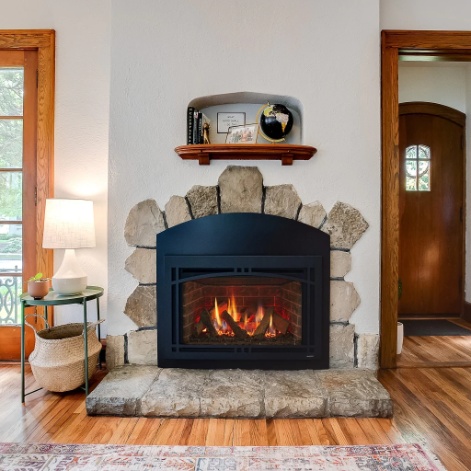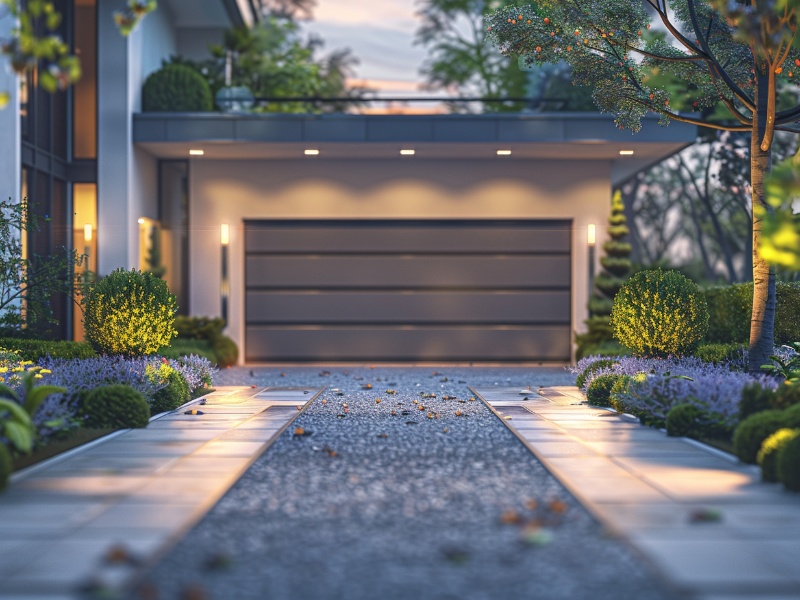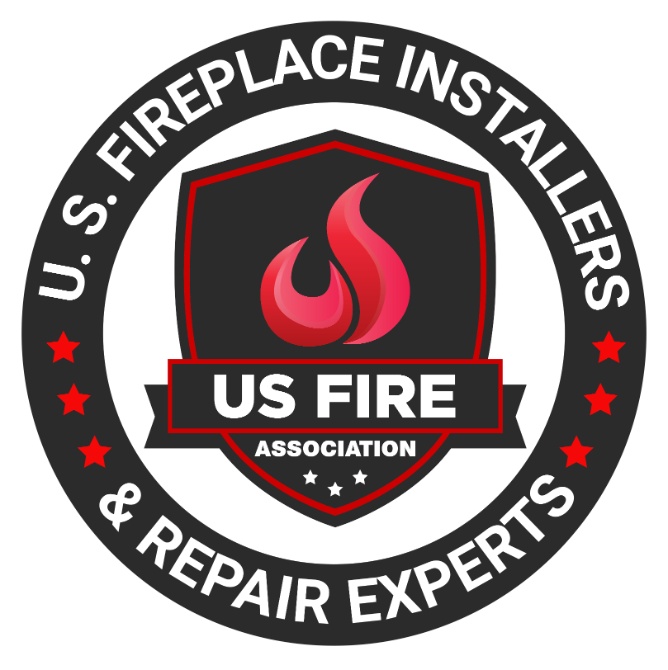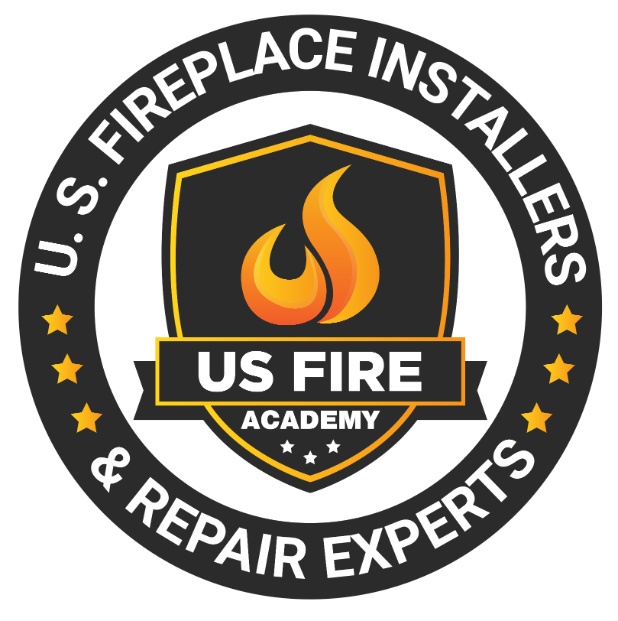Table of Contents
- 1 What Is a Fireplace?
- 2 What Is a Hearth?
- 3 Why Do Fireplaces Need Hearths?
- 4 What Are the Different Types of Hearths?
- 5 What Are the Factors to Consider When Choosing a Hearth?
- 6 Do Gas Fireplaces Need Hearths?
- 7 Do Electric Fireplaces Need Hearths?
- 8 What Are the Alternatives to a Traditional Hearth?
- 9 Frequently Asked Questions
If you’re considering installing a fireplace in your home, you may wonder if a hearth is necessary.
In this comprehensive guide, we’ll explore the importance of hearths for fireplaces.
We’ll cover the reasons why they are essential.
From safety considerations to aesthetic appeal, we’ll discuss everything you need to know about hearths and fireplaces.
Whether you’re choosing a traditional hearth or exploring alternative options, this article will help you make an informed decision for your home.
What Is a Fireplace?
A fireplace is a structure designed to contain a fire for heating and ambiance within a home or building.
Traditionally, fireplaces were crucial for providing warmth during colder seasons.
They also served as a gathering spot for families to bond and relax.
In modern times, fireplaces have evolved to offer practical heating solutions.
They also serve as stylish focal points in interior design.
With various hearth options available, such as wood-burning, gas, electric, or eco-friendly bioethanol fireplaces, homeowners now have a wide array of choices.
Beyond mere functionality, a fireplace adds a cozy and inviting atmosphere to a space.
It creates a sense of comfort and luxury.
What Is a Hearth?
A hearth is the floor area within a fireplace that extends into the room.
It is often made of fireproof materials to enhance safety and aesthetics.
This hearth extension serves as a protective barrier against stray embers or sparks that may escape the fire.
It prevents damage to the surrounding flooring or furniture.
Hearth pads, also known as hearthstones, are commonly used to give the hearth a decorative finish.
They also provide an additional layer of insulation.
Different materials like brick, stone, concrete, or tiles are used for constructing hearths.
The choice depends on the desired style and functionality of the fireplace.
The design of the hearth significantly impacts the overall look and feel of the fireplace.
It adds character and charm to the room.
Why Do Fireplaces Need Hearths?
Fireplaces require hearths for multiple reasons.
They ensure safety by containing embers, protect flooring from heat damage, and enhance the overall aesthetic appeal of the fireplace.
This crucial element serves a functional purpose and plays a vital role in improving the efficiency of the fireplace.
By providing a designated area for burning fires, hearths help in better heat distribution.
This ensures that warmth reaches all corners of the room.
Adhering to specific guidelines for hearth size and material can further enhance the fireplace’s performance.
Incorporating a well-designed hearth can transform the entire look of the fireplace.
It creates a focal point in the room and adds a touch of elegance to the space.
Safety
Ensuring the safety of a fireplace involves proper installation of a hearth.
This helps contain potential fire hazards and comply with relevant safety regulations and guidelines.
It is crucial to consider ventilation when installing a fireplace.
This ensures proper airflow and prevents the risk of carbon monoxide buildup.
Selecting appropriate hearth materials, such as fire-resistant stone or brick, enhances safety measures.
Construction materials should be chosen carefully to withstand high temperatures and potential exposure to flames.
Following regulatory requirements, like maintaining a clear area around the fireplace, is essential.
Using screens or gates to prevent sparks from escaping is also important.
By adhering to these safety considerations, the risk of accidents or fires can be greatly minimized.
Protection of Flooring
Hearths serve the crucial function of safeguarding flooring around fireplaces from heat damage and potential fire risks.
This requires durable and fireproof materials for construction.
Proper hearth size and clearance are important considerations.
They ensure effective heat distribution and minimize the risk of overheating.
Materials like firebricks, stone, or concrete are commonly used for hearth construction due to their heat-resistant properties.
It’s essential to incorporate good hearth design to complement the overall aesthetics of the fireplace while enhancing safety.
Regular maintenance, such as cleaning ashes and debris, is key to prolonging the longevity of the hearth.
Inspecting for cracks and resealing when necessary ensures efficient performance.
Aesthetic Appeal
In addition to safety considerations, hearths contribute significantly to the aesthetic appeal of fireplaces.
They enhance the overall design and decor of the living space.
Hearths serve as a focal point that can set the tone for the entire room.
They offer a wide range of design options to suit various styles and preferences.
From traditional brick hearths to modern minimalist designs, the hearth style can reflect the overall ambiance of the space.
Adding decorative elements such as mantels, hearth rugs, and fire screens can further enhance the hearth’s visual impact.
Functionally, hearths provide a cozy gathering spot during colder months.
This makes them both practical and aesthetically pleasing.
What Are the Different Types of Hearths?
Various types of hearths are available.
They range from concrete or stone slabs to brick or tile constructions, as well as raised platforms or fireproof rugs and mats.
Each type of hearth offers unique characteristics and design options.
For example, a hearth shape can vary from traditional rectangular or square designs to more modern curved or oval shapes.
The placement of the hearth within the room also plays a significant role in the overall aesthetic.
Hearth materials can range from classic brick or natural stone to sleek stainless steel or even eco-friendly options like recycled glass.
The diversity in hearths allows homeowners to personalize their living spaces and create a cozy focal point.
Concrete or Stone Slab
Concrete or stone slab hearths offer a durable and classic option for fireplace installations.
They provide a sturdy foundation and aesthetic appeal.
When selecting between concrete or stone slab hearths, it is crucial to consider dimensions such as hearth depth and hearth width.
This ensures a proper fit for your fireplace.
Concrete hearths are known for their strength and versatility.
They allow for customization in shape and finish.
On the other hand, stone slab hearths exude natural beauty.
They can add a touch of elegance to your living space.
Proper construction techniques are essential to ensure the longevity of your hearth.
Adherence to installation guidelines is crucial for safety and performance.
Brick or Tile
Brick or tile hearths are popular choices for adding design versatility and aesthetic charm to fireplaces.
They blend well with various interior decor styles.
These hearth options offer a plethora of design possibilities.
Homeowners can customize their fireplace ambiance to suit their tastes.
From classic herringbone patterns to sleek geometric designs, brick or tile hearths provide a canvas for creativity.
The diverse color palette available ensures that the hearth seamlessly integrates with the overall decor theme.
Whether installing a rustic wooden mantel or a modern metal shelf above the hearth, the design flexibility of brick or tile hearths allows for endless customization options.
Raised Platform
A raised platform hearth adds elevation to the fireplace area.
This creates a focal point and enhances the visual impact.
It also provides additional functionality for heating purposes.
The installation of a raised hearth height can offer various advantages.
It improves heat distribution throughout the room, making it a more efficient heating solution.
The raised platform serves as a decorative element that can complement the overall design of the fireplace.
It adds a touch of sophistication to the space.
When considering the practicality of a raised hearth, it’s essential to ensure that the installation is done correctly.
This guarantees safety and stability.
By carefully planning the design and height of the hearth, homeowners can achieve a balance between aesthetics and functionality.
Fireproof Rug or Mat
Using a fireproof rug or mat as a hearth option combines safety with versatility.
It offers a protective layer that can be easily maintained.
These rugs or mats are designed to withstand high temperatures.
They provide a barrier between the hearth and surrounding flooring, reducing the risk of accidental fires.
These practical accessories can easily be vacuumed or spot cleaned to keep them looking fresh.
They can complement various interior styles, enhancing the overall aesthetic of the fireplace area.
This ensures compliance with hearth regulations.
It also elevates the ambiance of the space, making it both visually appealing and secure.
What Are the Factors to Consider When Choosing a Hearth?
When selecting a hearth, factors such as size, shape, material, style, and design play crucial roles.
These factors determine the ideal hearth for a fireplace installation.
The hearth size directly impacts the visual appeal and heat output of the fireplace.
A larger hearth can accommodate bigger fireplaces and provide more space for decorative elements.
Shape is also significant.
A rectangular hearth may suit a modern setting, while a circular one can bring a touch of uniqueness.
Material selection influences both aesthetics and functionality—from classic brick to sleek marble.
Consider the hearth placement within the room as well.
Ensure it complements the overall design and serves as a focal point.
Size and Shape
The size and shape of a hearth are critical components to decide on.
They influence the installation process, dimensions of the fireplace, and overall visual impact.
When choosing the right hearth shape, consider factors like the flow of the room.
Think about how it complements the overall design scheme.
The hearth width plays a crucial role in determining the proportionality of the fireplace within the space.
Ensuring proper hearth clearance is also vital for safety reasons.
This prevents any nearby combustible materials from being exposed to excessive heat.
By carefully evaluating these aspects, homeowners can create a fireplace that looks stunning and functions effectively.
Material
Choosing the appropriate material for a hearth is crucial.
It ensures durability, safety, and aesthetic cohesion with the fireplace design.
This requires consideration of various construction options.
Different hearth materials offer unique advantages and drawbacks based on their properties.
Stone hearths, such as granite or slate, provide timeless elegance and outstanding durability.
They are ideal for withstanding high temperatures and may require occasional sealing to prevent staining.
On the other hand, ceramic tiles offer a wide range of colors and patterns.
This allows for customizable hearth decor, but they are more prone to cracking under extreme heat.
Maintenance requirements also vary.
Some materials need regular cleaning and sealing to preserve their appearance and functionality.
Style and Design
The style and design of a hearth contribute significantly to the overall aesthetics and decor of a fireplace.
They offer a range of options to suit various interior design themes.
For those looking to create a cozy and traditional ambiance, a classic brick hearth design can add rustic charm to the space.
Alternatively, a sleek minimalist hearth style with clean lines and a neutral color palette can beautifully complement modern decor.
Incorporating decorative elements such as mantel pieces, hearth rugs, or fireplace screens can enhance the visual appeal further.
The choice of hearth decor, whether vintage-inspired accessories or contemporary accents, can tie the room together for a cohesive and inviting atmosphere.
Do Gas Fireplaces Need Hearths?
Gas fireplaces may still benefit from hearths for installation purposes.
They also consider safety and compliance with relevant regulations.
Even though they may not require hearths for the same reasons as wood-burning fireplaces, they still have their advantages.
The hearth in a gas fireplace installation serves as a protective barrier between the flames and any flammable materials nearby.
This reduces the risk of accidental fires and ensures proper ventilation.
From a regulatory standpoint, some jurisdictions mandate specific hearth dimensions and materials.
This ensures safe operation of gas fireplaces.
The hearth plays a crucial role in enhancing the overall aesthetic appeal of the fireplace.
It provides a focal point while complementing the surrounding decor with its design and finish.
Do Electric Fireplaces Need Hearths?
Electric fireplaces typically do not require hearths due to their construction and safety features.
They offer alternatives for achieving a similar ambiance and aesthetic appeal without the need for traditional hearths.
With advancements in electric fireplace technology, modern units can be wall-mounted, recessed into walls, or even placed within entertainment centers without the need for a hearth.
This flexibility allows homeowners to create a cozy atmosphere in any room.
They can do this without the constraints of a traditional fireplace setup.
Some electric fireplaces come with customizable flame effects, heat settings, and ambient lighting options.
This allows users to tailor the visual appeal to suit their preferences.
It enhances the overall ambiance of their living spaces.
What Are the Alternatives to a Traditional Hearth?
For those seeking alternatives to traditional hearths, options such as fireplace screens, doors, grates, and inserts offer practical and decorative solutions.
These enhance fireplace functionality and aesthetics.
Fireplace screens are not only decorative but also serve as protective barriers.
They prevent sparks from escaping and ensure safety.
Doors can help control airflow, optimizing heating efficiency.
They also add a touch of style to the hearth.
Grates elevate the appearance of the fireplace while facilitating optimal airflow for a consistent and efficient burn.
Inserts are perfect for upgrading an existing fireplace.
They provide a more efficient heating solution with modern design elements.
This can transform the decor of any room.
Fireplace Screens
Fireplace screens provide a versatile alternative to traditional hearths.
They offer safety features, decorative elements, and practical functions.
These screens add a layer of protection by preventing sparks from escaping into the room.
They also serve as an elegant way to complement the overall decor.
With various design options available, you can choose from sleek modern styles to intricate, antique-inspired pieces.
Fireplace screens can help extend the hearth’s warmth.
This creates a cozy atmosphere for gatherings or quiet evenings.
They also maintain proper ventilation, ensuring a controlled and safe environment around the fireplace.
Fireplace Doors
Fireplace doors present an effective alternative to traditional hearths.
They provide heating efficiency, ambiance enhancement, and a modern touch to fireplace installations.
One of the key advantages of utilizing fireplace doors is their ability to improve heating efficiency.
They contain the heat produced within the hearth and radiate it into the room.
This makes it a practical and cost-effective way to enhance the utility of your fireplace.
These doors serve a functional purpose and contribute to the overall decor of the room.
They add a touch of elegance and sophistication.
They come in a variety of styles and sizes, allowing homeowners to customize and complement their hearth size and design seamlessly.
Fireplace Grates
Fireplace grates offer a unique alternative to traditional hearths.
They utilize different construction materials to support firewood, enhance ventilation, and simplify maintenance in fireplace setups.
By incorporating fireplace grates, homeowners can benefit from improved airflow around the firewood.
This promotes better combustion and heat distribution.
These grates come in various materials such as steel, cast iron, and stainless steel.
They offer durability and longevity.
Using fireplace grates can minimize the buildup of ashes and debris.
This makes cleaning and upkeep more manageable.
This not only enhances the aesthetic appeal of the fireplace but also optimizes its efficiency.
It allows the fire to burn more efficiently.
Fireplace Inserts
Fireplace inserts serve as convenient alternatives to traditional hearths.
They offer easy installation, efficient heating options, and diverse design choices.
These inserts complement various fireplace styles.
They are designed to enhance the hearth function by providing a more efficient way to heat your home.
With improved insulation and heat distribution, fireplace inserts can significantly increase heating efficiency.
They also reduce energy costs.
These inserts offer a wide range of design options.
From modern and sleek to classic and traditional, they allow you to customize your fireplace.
This matches your home decor seamlessly.
When considering installation, it’s essential to follow specific guidelines.
This ensures proper venting and safety protocols are met.
It makes fireplace inserts a viable and safe option for your space.
Frequently Asked Questions
1. Is a hearth necessary for a fireplace?
Yes, a hearth is necessary for a fireplace as it enhances safety by containing embers and protects flooring from heat damage.
2. What materials are commonly used for constructing a hearth?
Common materials for constructing a hearth include brick, stone, concrete, and tiles, chosen for their durability and fire-resistance.
3. How does a hearth improve fireplace efficiency?
A hearth helps in better heat distribution by providing a designated area for the fire, ensuring warmth reaches all corners of the room.
4. What types of hearths are available for fireplaces?
Available hearth types include concrete or stone slabs, brick or tile constructions, raised platforms, and fireproof rugs or mats.
5. Do gas fireplaces need a hearth?
While not required for the same reasons as wood-burning fireplaces, gas fireplaces can benefit from a hearth for safety and aesthetic purposes.
6. What are the aesthetic benefits of a hearth?
A hearth enhances the overall design of a living space, serving as a focal point that adds charm and coziness to the room.
7. How do I choose the right size for a hearth?
To choose the right size for a hearth, consider the dimensions of the fireplace, the desired aesthetic impact, and safety clearances from combustible materials.
8. Can electric fireplaces have a hearth?
Electric fireplaces typically do not require hearths due to their design, but they can still have decorative hearth-like features for aesthetics.
9. What alternatives are available to traditional hearths?
Alternatives to traditional hearths include fireplace screens, doors, grates, and inserts, which enhance both functionality and decor.
10. What safety considerations should I keep in mind when installing a hearth?
Ensure the hearth is made from fire-resistant materials, follows safety regulations, and maintains proper airflow and clearance from combustible objects.
Latest Articles

What Is An NG (Natural Gas) Indicator And Why You Need It For Your Fireplace
Table of Contents1 Understanding Natural Gas Fireplaces2 What is an NG Indicator?3 Importance of NG Indicators for Safety4 Types of NG Indicators5 Installation and Maintenance of NG Indicators6 Signs of a Faulty NG Indicator7 Frequently Asked Questions Natural gas fireplaces are a favored option among numerous homeowners due to their convenience and effectiveness. But, what is an NG (Natural Gas) indicator and why you need it for your fireplace? It is imperative to comprehend how they function and the significance of having an NG (Natural Gas) indicator for safety purposes. This article delves into the definition and significance of NG indicators. We will discuss the potential hazards associated with the absence of one and the various types of indicators accessible. Also, we will discuss installation and maintenance recommendations, and methods to recognize and rectify issues with malfunctioning indicators. Stay well-informed and ensure the safety of your home by referring to this exhaustive guide. Understanding Natural Gas Fireplaces Natural gas fireplaces serve as an efficient and convenient heating option for numerous households. They utilize natural gas as a fuel source to deliver consistent warmth and ambiance. How They Work and Why They Need NG Indicators The operation of natural gas fireplaces involves igniting natural gas to generate heat. This process requires diligent monitoring to ensure both safety and efficiency, a task facilitated by the use of NG indicators. NG indicators play a critical role in detecting potential gas leaks. They enable residents to promptly address and mitigate any associated hazards. Through continuous monitoring of gas levels and providing timely warnings and alerts, NG indicators uphold a secure indoor environment. It is imperative to ensure that these indicators function properly to facilitate the effective operation of natural gas fireplaces. This helps mitigate the inherent risks linked to gas leaks. What is an NG Indicator? An NG indicator is a specialized device equipped with advanced sensors and technology. It is specifically designed to detect natural gas leaks and monitor gas pressure in appliances, such as fireplaces. Definition and Purpose The NG indicator functions as a detector that monitors gas appliances for potential leaks. It provides essential functionality to ensure safety in households utilizing natural gas. These detectors play a crucial role in protecting residences by notifying occupants of dangerous gas leaks long before they escalate into perilous situations. Through continuous monitoring of gas levels in the vicinity, NG indicators offer an additional layer of protection. This is particularly important in properties that rely on gas-operated fireplaces or stoves. These devices not only help avert potential disasters but also enhance the overall peace of mind of homeowners. They assure them that their living spaces are equipped with reliable safety features. Importance of NG Indicators for Safety Natural gas indicators are essential for maintaining safety in households equipped with natural gas appliances. These devices serve as a proactive measure to promptly detect gas leaks. This offers homeowners a sense of security and assurance. Potential Dangers of Not Having an NG Indicator The absence of an NG indicator in residences equipped with natural gas appliances can pose significant hazards. This includes the risk of undetected gas leaks , carbon monoxide poisoning , and pilot outages that may lead to dangerous situations. These potential risks can profoundly impact indoor air quality. They directly influence the health and safety of individuals residing in the household. Undetected gas leaks can go unnoticed, gradually permeating the air and creating a potentially explosive environment. Insufficient ventilation from undetected exposure to carbon monoxide can lead to serious health complications. These range from mild symptoms such as dizziness to fatal poisoning. Without proper monitoring from an NG indicator, families are left susceptible to these concealed threats. This underscores the critical importance of implementing proactive measures to mitigate such risks. Types of NG Indicators Indicators for Natural Gas (NG) are available in diverse types. Each presents distinct detection capabilities tailored to specific requirements, encompassing both manual and automated alternatives. Manual vs. Automatic Indicators Manual NG indicators require user intervention for monitoring gas levels and identifying leaks. On the other hand, automatic indicators employ sophisticated technology to deliver continuous, real-time monitoring. This heightened efficiency and oversight enhance safety protocols. Conventional manual indicators rely on individuals to physically inspect and evaluate gas levels periodically. This renders them more susceptible to human errors. Conversely, automatic indicators feature sensors capable of promptly detecting even the most minute fluctuations in gas levels. This establishes a more dependable and precise monitoring mechanism. Automatic indicators can activate alerts and shut-off systems upon detecting a leak. This ensures immediate action to avert potential hazards. This advanced technology enhances safety protocols and instills a sense of command and assurance among users. Installation and Maintenance of NG Indicators The reliable and accurate performance of NG indicators necessitates proper installation and consistent maintenance. This often entails professional installation and adherence to recommended service guidelines. Proper Installation and Regular Maintenance Tips The proper installation of NG indicators involves adhering to the specifications in the user manual. Maintenance protocols entail strict adherence to a predetermined maintenance schedule to ensure sustained operational efficiency. During the installation phase, it is imperative to verify that the NG indicators are securely affixed in the designated location as stipulated by the manufacturer. Crucial steps include confirming power source compatibility and ensuring proper grounding of the device to optimize performance. Calibration of the indicator must be executed meticulously to ensure precise readings. Regarding maintenance, essential practices include regular inspection for signs of wear, thorough cleaning of the indicator components, and routine functionality tests. By allocating time to a consistent maintenance regimen, the NG indicator can operate with optimal efficiency over an extended duration. Signs of a Faulty NG Indicator Recognizing indicators of a malfunctioning NG indicator is essential for upholding safety and performance standards. Inaccuracies and detection issues can undermine the efficacy of these devices. Identifying and Addressing Issues The process of identifying and addressing issues related to NG (natural gas) indicators requires a systematic troubleshooting approach. This ensures their optimal performance

What You Need To Know About Gas Log Set Safety And Installation Considerations
Table of Contents1 Understanding Gas Log Sets2 Safety Considerations for Gas Log Sets3 Installation Guidelines for Gas Log Sets4 Maintaining and Troubleshooting Gas Log Sets5 Frequently Asked Questions Gas log sets are a favored option among homeowners seeking to enjoy the comfort and atmosphere of a conventional fireplace without the inconvenience of wood. This article tells you what you need to know about gas log set safety and installation considerations. Before incorporating one into your residence, it is imperative to understand the safety considerations associated with their use. This discussion delves into the potential hazards linked with gas log sets. It presents crucial precautions to uphold the safety of your home. Also, it outlines proper installation procedures and offers insight into common errors to avoid. Finally, it provides advice on maintenance and troubleshooting. Gain comprehensive knowledge on gas log set safety and installation considerations. Understanding Gas Log Sets Comprehending gas log sets is essential for individuals seeking to elevate their fireplace experience, and for gas lag set safety and installation. These heating appliances can operate on either natural gas or propane. In addition, they are available in a range of styles, including vented, ventless, and vent-free options. They provide an array of benefits and customization opportunities through various fireplace accessories. What are Gas Log Sets? Gas log sets are meticulously crafted artificial logs. They are designed to imitate the appearance and functionality of authentic wood logs within fireplaces. These gas log sets typically consist of ceramic or refractory concrete logs that have been skillfully molded and painted. This allows them to replicate the natural grain and texture of real wood. The logs are arranged in various configurations within the fireplace. They establish a realistic and welcoming ambiance. In addition to the logs, gas log sets often include fireplace accessories such as glowing embers. Accessories also include decorative stones, and even pine cones to enhance the overall aesthetic appeal. Homeowners can select from an array of placement options. These include traditional wood stack, cascading driftwood, or a contemporary geometric arrangement. Homeowners can align their preferred style and design preferences. Safety Considerations for Gas Log Sets Safety considerations for gas log sets are of utmost importance to guarantee a secure and pleasant fireplace experience. It is essential to address potential hazards such as carbon monoxide exposure, gas leaks, and fire safety to maintain a safe environment for homeowners. Potential Hazards and Precautions Gas log sets come with potential hazards that must be taken seriously, including the risks of gas leaks, carbon monoxide poisoning, and fire incidents. It is imperative to establish and adhere to rigorous safety measures to ensure the well-being of individuals and properties involved in the use of gas log sets. Gas leaks represent a significant hazard when utilizing gas log sets. They can result in the accumulation of combustible gas within the premises, heightening the possibility of explosions or fires. Carbon monoxide, an insidious gas generated during incomplete combustion, poses a grave threat due to its colorless and odorless nature, making it undetectable without proper monitoring. To address these risks effectively, it is vital to install carbon monoxide detectors and gas leak sensors in the vicinity of the gas logs. Routine maintenance checks on the gas log system, including cleaning and inspection procedures, are critical to ensure safe operations and the prompt identification of potential issues. In case of a gas leak or suspected presence of carbon monoxide, immediate evacuation of the affected area is paramount, followed by prompt contact with emergency services. Recognizing the distinct odor of rotten eggs associated with natural gas can serve as an early warning sign, prompting swift actions to avert any potential accidents. Installation Guidelines for Gas Log Sets The installation of a gas log set necessitates meticulous planning and strict adherence to specific guidelines. This includes verifying a secure gas connection, ensuring proper gas lines are in place, and complying with local building codes. Often, the complexity of these requirements may require the expertise of a certified technician. Proper Installation Techniques The appropriate installation procedures for gas log sets involve the secure connection of gas lines, meticulous adherence to installation manuals, and strict compliance with local building codes. It is imperative to prioritize the guarantee of secure gas connections to avert leaks and potential safety hazards. During the installation of gas log sets, utilizing suitable sealants and fittings is essential to establish a tightly sealed connection. The correct installation of gas lines is critical for both the safety and operational efficacy of the gas log set. Reference to the installation manual is highly advisable for detailed, step-by-step guidance to prevent inaccuracies and ensure the successful establishment of the gas log set. Consistently adhering to building codes and regulations upholds safety standards. Seeking guidance and confirmation from a certified technician before and after installation can offer invaluable support and assurance throughout the process. Common Installation Mistakes to Avoid It is imperative to avoid common installation errors to ensure the secure and effective operation of gas log sets. This includes verifying proper gas connections and compliance with building codes. Improper gas connections can result in leaks and potential hazards, underscoring the importance of verifying the tightness and correct alignment of all fittings. Failure to adhere to building codes can lead to structural complications, penalties for non-compliance, or even safety concerns. To prevent these oversights, it is advised to consult the manufacturer’s installation guidelines and strictly adhere to local regulations. Engaging a certified technician for the installation of gas log sets guarantees that the procedure is carried out accurately and securely. This provides assurance that the system is functioning as intended. Maintaining and Troubleshooting Gas Log Sets Regular maintenance and troubleshooting of gas log sets are imperative to uphold their optimal performance and safety. This includes thorough examination of the pilot light, pilot assembly, and other gas appliances to preserve heating efficiency and promptly resolve any arising issues. Tips for Maintenance and Repair Ensuring the proper maintenance of your gas log set necessitates conducting

Key Considerations For Using Compressed Liquid Propane In Fireplace Installation
Table of Contents1 What is Compressed Liquid Propane?2 Benefits of Using Compressed Liquid Propane in Fireplaces3 Safety Precautions for Installing Compressed Liquid Propane Fireplaces4 Installation Process for Compressed Liquid Propane Fireplaces5 Maintenance and Care for Compressed Liquid Propane Fireplaces6 Alternative Fuel Options for Fireplaces7 Frequently Asked Questions If you are contemplating the use of compressed liquid propane in your fireplace installation, this discussion will delve into the advantages of adopting this alternative fuel option. These benefits include enhanced efficiency, cost savings, and important safety precautions to consider. Furthermore, a detailed step-by-step guide on the installation process will be provided, along with recommendations for maintenance and care. A comparison of various fuel options for fireplaces will also be conducted to assist you in making an informed decision. We encourage you to stay engaged to gain insights into optimizing your fireplace’s capabilities with compressed liquid propane. What is Compressed Liquid Propane? Compressed Liquid Propane is a versatile energy source contained in a high-pressure propane tank. It finds extensive utility in both residential and commercial settings, prominently including fireplaces. Recognized for its convenience and efficiency, Compressed Liquid Propane emerges as a favored option for heating residential spaces and facilitating culinary pursuits across various environments. Additionally, it serves as a viable fuel substitute in vehicular contexts, portable cooktops, and outdoor grilling scenarios due to its propensity for clean combustion. The attribute of portability, coupled with ease of storage, positions Compressed Liquid Propane as an optimal energy source for individuals residing off the conventional grid. It is also great for engaging in outdoor activities such as camping and recreational vehicle (RV) travel. Moreover, the high energy density inherent to Compressed Liquid Propane renders it a dependable choice for sustaining generators during instances of power disruptions. Benefits of Using Compressed Liquid Propane in Fireplaces Utilizing Compressed Liquid Propane for fireplace installation presents several benefits. These include enhanced fuel efficiency, convenience, cost-effectiveness, and a favorable environmental footprint. These attributes render it a recommended option for heating solutions, applicable to both on-grid and off-grid settings. Efficiency and Cost Savings The utilization of Compressed Liquid Propane in fireplaces offers significant advantages, notably in terms of high fuel efficiency and cost-effectiveness. These attributes are underscored by the exceptional BTU rating and overall heating efficiency of Compressed Liquid Propane. The elevated fuel efficiency exhibited by Compressed Liquid Propane fireplaces necessitates less fuel to generate the same level of heat compared to traditional wood-burning fireplaces or electric heating systems. Consequently, homeowners can realize cost savings on their heating expenditures over an extended period. Moreover, the clean-burning characteristics of propane minimize maintenance costs linked to soot and ash cleanup. This further enhances the cost-effectiveness of employing propane fireplaces. Safety Precautions for Installing Compressed Liquid Propane Fireplaces Ensuring safety is of utmost importance during the installation of Compressed Liquid Propane fireplaces. This requires strict adherence to safety regulations, meticulous attention to proper ventilation requirements, careful control of ignition sources, and the incorporation of carbon monoxide and gas leak detection systems. Important Safety Measures Essential safety protocols for the installation of Compressed Liquid Propane fireplaces encompass adherence to fire safety regulations. Engaging in professional assessments and employing sophisticated gas leak and carbon monoxide detection mechanisms is crucial. Professional evaluations play a critical role in identifying any prospective hazards or irregularities within the fireplace infrastructure. These assessments are vital in ensuring the operational integrity of all components and compliance with safety protocols. Routine inspections serve to forestall potential fire incidents, gas discharges, or carbon monoxide emissions that could pose significant threats to both the property and individuals in the vicinity. The utilization of advanced gas leak and carbon monoxide detection systems serves as an additional safeguard by promptly notifying occupants of any elevated levels of these hazardous gases. Installation Process for Compressed Liquid Propane Fireplaces The installation procedure for Compressed Liquid Propane fireplaces encompasses several critical steps. These include: Adhering to installation guidelines Correctly positioning the propane tank Ensuring precise gas line installation Optimizing heat output Monitoring pressure regulation Establishing the pilot light Step-by-Step Guide The installation process of Compressed Liquid Propane fireplaces involves a systematic approach. This begins with the construction of the firebox, followed by the installation of the gas control valve, setup of the ignition system, design of the flue, and verification of a suitable combustion air supply. The construction of the firebox assumes critical importance as it serves as the foundation of the fireplace structure. It securely holds the combustible materials in place. Subsequently, the gas control valve plays a key role in managing the propane flow, guaranteeing safe and efficient operation. The installation of the ignition system facilitates convenient and reliable fire initiation. Designing the flue is a necessary step to direct exhaust gases outside, thus preventing their accumulation indoors. Moreover, ensuring a proper combustion air supply is essential to sustain optimal burning conditions and enhance fuel consumption efficiency. Each component contributes significantly to the functionality and safety of the fireplace installation process. This underscores the importance of meticulous attention to detail and adherence to established protocols. Maintenance and Care for Compressed Liquid Propane Fireplaces Consistent maintenance and attention to Compressed Liquid Propane fireplaces are imperative to guarantee their optimal functionality. This includes adherence to prescribed maintenance protocols, regular chimney upkeep, prevention of soot accumulation, and scheduling of routine propane deliveries and professional inspections. Tips for Keeping Your Fireplace in Good Condition For the maintenance of your Compressed Liquid Propane fireplace, it is essential to conduct regular checks on ignition sources. Monitor flame appearance, clean the gas burner and pilot assembly, and verify the correct operation of the safety shut-off valve. The inspection of ignition sources requires a detailed examination of the electronic igniter. This helps identify any signs of damage or corrosion and ensures proper sparking upon activation. Monitoring flame appearance involves observing a consistent blue flame with minimal flickering, which signifies efficient combustion. Cleaning the gas burner and pilot assembly can be performed using a soft brush or compressed air to eliminate any dirt or debris that may
